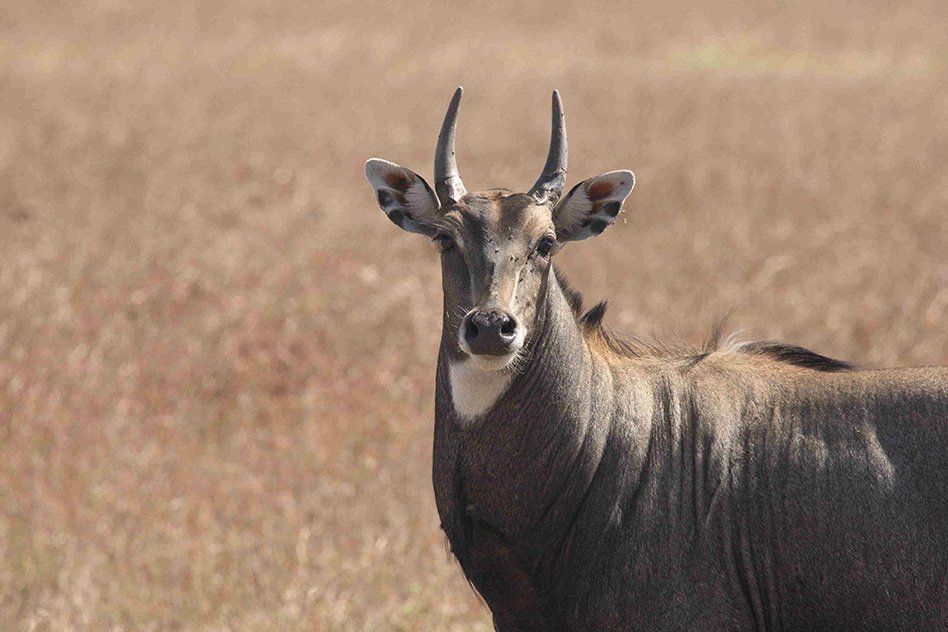News Source: indianexpress| Originally reported by Milind Ghatwai| Image Source: justmonkeying
In parts of Central and Northern India, crop depredation caused by the “Nilgai” is considered a menace to farmers. Due to prolonged breeding activities and lack of predators, Asia’s largest antelopes often known as ‘Blue bucks’ have been raiding crops and destroying the livelihood of farmers.
Farmers use a range of tricks to keep the animals away from their crops such as fladry, scarecrows, fire, and fencing their fields with tall thorny trees. Despite these efforts, farmers have failed to put an end to the damage done to the crops still resulting in 60 to 70% loss.
It has been more than a decade that killing a Nilgai is legalised in Madhya Pradesh by requesting permission from district authorities. Not a single nilgai is culled under the existing order because of the religious angle to this issue as the gai in the animal’s name means “cow” which considered being a symbol of sanctity in the country.
In an attempt to end the plight of farmers, the state MLA’s on 29th February have reached a consensus of renaming the antelope to “rojad” to cope up with the religious conundrum associated with the name ‘gai’.
The whole series of events has again raised concerns about the ethics of killing the animal. Amongst being compassionate to the farmers there are Wildlife activists who fear that the crop protection measure can be exploited by rich sport hunters in the name of farmers. This law can even encourage the poachers and endanger the other wildlife species.
Killing an animal is not the only option available to the state for the prevention of crop damage. There are other ways too. The focal point of the issue should be understanding the causes of this mishap. The animals are not just confined to their designated areas, they are migrating only because of the lack in forest areas. Rejuvenating small degraded forests and stop people from cutting trees illegally is a more genuine and simplest solution to the problem. However, making a wildlife sanctuary for them can be a fruitful only in the long run.
Recently the Madhya Pradesh Forest Department had conducted a seminar on how to manage or minimize crop damage by wild animals. Some very interesting suggestions came out based on the traditional knowledge of these activists and villagers.
- Using the urine or faeces of tigers, or other carnivores, always works to repel herbivores.
- Interspersing maize with chillies or burning chillies around the field keeps elephants away. Honey bee keeping on the periphery of the fields also scares them away.
- Planting Lachhka and barseem (alfalfa) as a buffer crop reduces crop raiding by blackbucks.
- Mixing the leaves of sitafal (sharifa), Besharam (Ipomoea carnea), cow urine and neem and spraying them over crops, stops animals from eating the crop even if they enter the field.
- Trained guard dogs. In their absence dog faeces can be spread on the edges of each field.
- Fencing with medicinal plants that repel the pests.
The Logical Indian is concerned about the plight of the farmers affected due to the pests but at the same time believe that murdering an animal is not justified. Only poachers will be benefited from such a law. A much concrete solution to this problem lies not in killing but looking for alternatives to killing like sedating and taking the animals to a secluded place away from farms. We appreciate Madhya Pradesh’s efforts to look into the issues of farmers but want to draw their attention to the alternates that must be used to solve the crisis rather than killing.
-Pulkit Benada











